Big nose, ears that stick out: Why mouse-faced men are coming out on top
The international press has coined a term for the lot — ‘hot rodent man’ — and swears that the faces of actors like Timothée Chalamet, Barry Keoghan, Jeremy Allen White, Mike Faist and Josh O’Connor constitute a new kind of masculine beauty
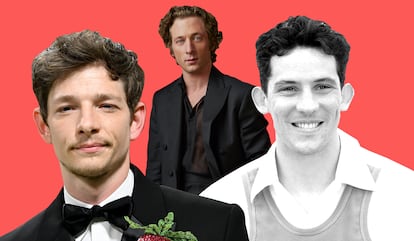

Every so often, a new aesthetic is born. Last summer, there was much talk of the return of “indie sleaze,” which described a certain kind of lanky dreamboat — think Pete Doherty from years gone by. At the end of 2023, we deconstructed “the rich disaster,” the man so powerful and privileged that he dresses however he pleases, a type that has brought us the unspeakable outfits of Adam Sandler, Justin Bieber and Pete Davidson. Constant praise of male aesthetics that stray from the norm (usually defined as a muscly guy in a neat suit, dressed to conquer either a romantic partner or their mother) makes it clear that the canons of male beauty are changeable and, above all, forever open to riffs on what is truly attractive. Indeed, these deviations, the world being what it is, often turn into trends themselves and even, turn a profit.
The latest example in this dynamic is the boom of the “hot rodent men,” a tagline created by the international press (from The Independent and CNN to The New York Times) to describe the appearance of actors such as Timothée Chalamet, Barry Keoghan, Jeremy Allen White, Mike Faist and Josh O’Connor.
When one X user encountered an image of O’Connor — the star of Challengers — on a promotional junket for the film, their words made it clear that the rise of men with the Ratatouille look is no mere invention of the press. “He looks like a very kindhearted mouse who got turned into a prince,” said the internaut. To what is due this comparison to rodents? These men have big ears, considerable noses, small eyes, a somewhat glazed facial expression, diminutive physiques (though they can also take the shape of gym rats and underwear ad gods). And at the same time, they are actual sex symbols. Far from being seen as ugly, they represent the new handsome. Coincidence or not, the rodent comparison has risen to the fore at a moment in which all kinds of rodents (from chinchillas to capybaras) are all the rage online, eliciting our sighs with their clueless brand of beauty. Social media, you never cease to amaze.
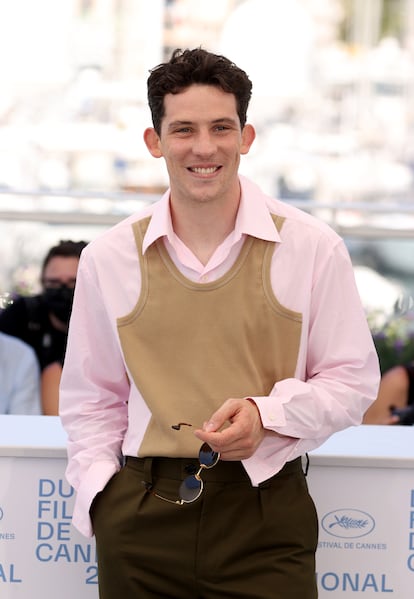
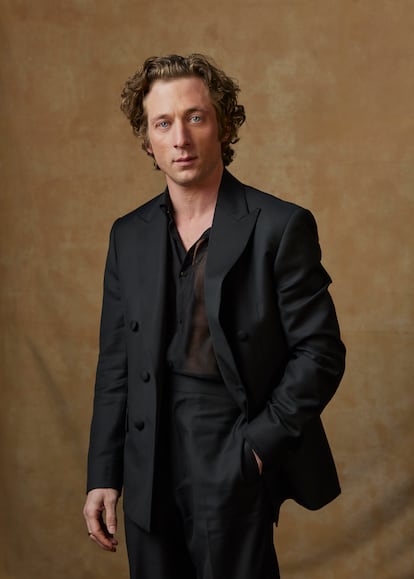
Bumble’s Dating Trends 2023 report found that one of the most popular trends in the world of romance is the so-called “open casting,” a more permissive and inclusive manner of deciding on who to date. This involves getting to know people who fall outside of one’s “typical physical type” and, according to the survey, 38% of singles are more open to casting this kind of wide net. The zeitgeist appears to be in support of this trend, having supplied us with a constellation of new stars who have that certain something, that je ne sais quoi, that he’s not hot but he’s interesting (though let’s not fool ourselves, if Hollywood has hoisted you up as a sex symbol, you’re likely to be good-looking, even if you don’t have the same looks as Brad Pitt or Chris Hemsworth).
As Alex Abad-Santos wrote on Vox, “dad bod,” a term for describing the physique of men characterized by their “beer belly” and for which Leonardo DiCaprio is the current standard-bearer, is another invitation to applaud softer masculine forms (though some hot rodent men are of the sculpted sort, such as White, who has served as the poster boy for Calvin Klein underwear). “Historically, beauty pressure has been worse for women, while men’s appearance is less important than their economic worth. I think that the concept of the hot rodent man perpetuates that, because it invites us to praise a kind of non-normative masculine beauty while women continue to be victims of a suffocating aesthetic pressure to fulfill normative canons,” says Jill Burke, author of How to Be a Renaissance Woman, in which she unravels the origins of beauty ideals that are still with us today — when it comes to women’s appearances, of course.
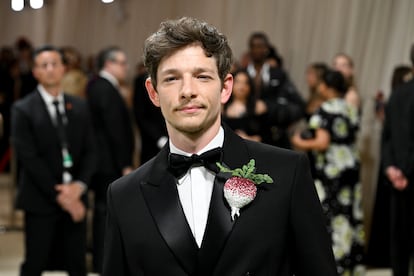
“Society tends to better accept more kinds of attractiveness in men as compared with women. You have to keep in mind that the people who are reaffirming and exalting the kind of masculinity presented by the hot rodent man are women, who are attracted, emotionally or sexually, to … different kinds of men. A man who isn’t worried about appearing macho could be someone who is less affected by the cultural norms of toxic masculinity. That’s why some people are attracted by those who do not perform that kind of masculinity,” says Cecilia Bizzoto, sociologist, spokesperson and content creator for JOYclub España, a sex-based social media network. “In heterosexual and cis environments, men have more freedom and approval to express themselves in a more feminine and/or fluid way. In contrast, in those same environments, women must behave in a typically feminine manner, being fragile, passive, intuitive, sensitive and dependent to gain masculine approval,” she says.
Abad-Santos says that pop culture is full of examples of beautiful women who fall in love with less attractive men: White, the star of The Bear, is dating Spanish singer Rosalía and Chalamet’s girlfriend is Kylie Jenner. Anthromorphizing animals to render them masculine beauty typologies can be fun and novel, but we mustn’t forget that it’s part of a front through which any masculine defect may be integrated into popular discourse, to the point to which it becomes a virtue. Celebrated actresses have also been compared with fauna — horses and yes, rodents, even on enormously popular TV series, yet this has never led to new feminine beauty standards. Rather, it’s a way of calling them ugly.
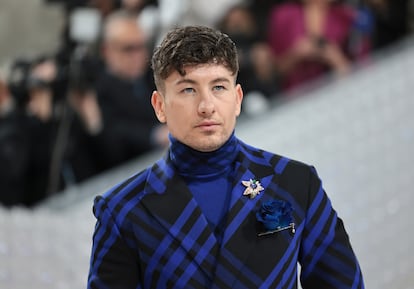
It’s also important to point out that although men who are compared to cartoon rats are lauded from their divergence from the beauty canon, as Biel Moreno, activist and Afrocolectiva collaborator, explains, “the hot rodent man is not just a trend exclusive to white people, given that it requires characteristics that are not found in other ethnicities. In addition, it is a clear indicator of how, even when the industry accepts other kinds of beauty, it continues to center on Eurocentric standards,” he says. “Whenever we enter the field of beauty, racialized people are aware that some norms and trends do not apply to us. Historically, the features that have been standardized as attractive or desirable have been imposed by the West, and its ideals originate in white supremacy. Fair skin, narrow nose, thin lips, light eyes, straight hair and a slim figure, among others, are the main Eurocentric attributes that, today, continue to be indicators of beauty in the fashion, film, television and advertising industries,” he says.
Content creator Blake Neiman Thornton made a video analyzing the phenomenon in which he says that, “being told by every media outlet that you are ugly-hot is the ultimate form of internet gaslighting” and agrees with Moreno that the term is racist. “The underlying message of this movement is that only white men are given the grace of being unconventionally attractive. From what I can tell, ‘hot rodent summer’ just means you’re some kind of combination of short, pale and unskilled with an iron — but we still want to put you in Calvin Klein campaigns. Meanwhile, men of color still have to look like some Benetton combination of James Bond and Superman,” he says.
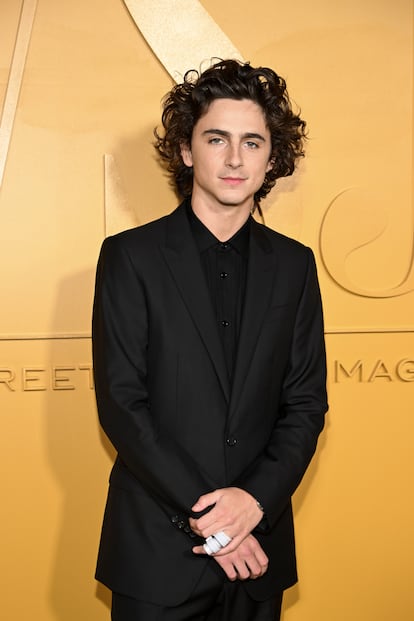
“To form part of this privileged selection you have to fulfill much stricter standards, such as having completely symmetric facial characteristics, impeccable skin and bodies in line with European standards. These figures are only selected if their beauty is on balance with the white imaginary and its exoticization,” says Moreno. The hot rodent man is not a bad beginning, but we hope that the next time we are talking about a new beauty trend, masculine or feminine, it encompasses other colors, ages and shapes.
Sign up for our weekly newsletter to get more English-language news coverage from EL PAÍS USA Edition
Tu suscripción se está usando en otro dispositivo
¿Quieres añadir otro usuario a tu suscripción?
Si continúas leyendo en este dispositivo, no se podrá leer en el otro.
FlechaTu suscripción se está usando en otro dispositivo y solo puedes acceder a EL PAÍS desde un dispositivo a la vez.
Si quieres compartir tu cuenta, cambia tu suscripción a la modalidad Premium, así podrás añadir otro usuario. Cada uno accederá con su propia cuenta de email, lo que os permitirá personalizar vuestra experiencia en EL PAÍS.
¿Tienes una suscripción de empresa? Accede aquí para contratar más cuentas.
En el caso de no saber quién está usando tu cuenta, te recomendamos cambiar tu contraseña aquí.
Si decides continuar compartiendo tu cuenta, este mensaje se mostrará en tu dispositivo y en el de la otra persona que está usando tu cuenta de forma indefinida, afectando a tu experiencia de lectura. Puedes consultar aquí los términos y condiciones de la suscripción digital.
More information
Archived In
Últimas noticias
Most viewed
- Reinhard Genzel, Nobel laureate in physics: ‘One-minute videos will never give you the truth’
- Oona Chaplin: ‘I told James Cameron that I was living in a treehouse and starting a permaculture project with a friend’
- Pablo Escobar’s hippos: A serious environmental problem, 40 years on
- Charles Dubouloz, mountaineering star, retires at 36 with a farewell tour inspired by Walter Bonatti
- Why we lost the habit of sleeping in two segments and how that changed our sense of time









































